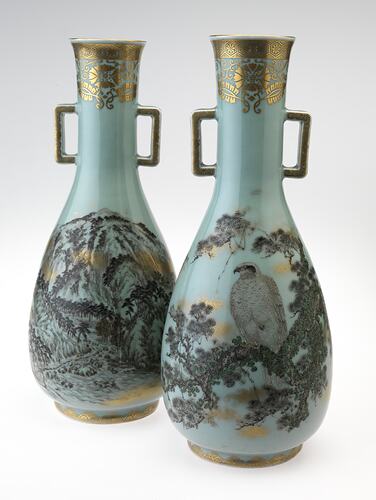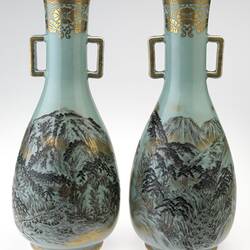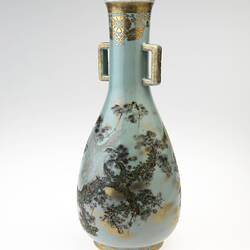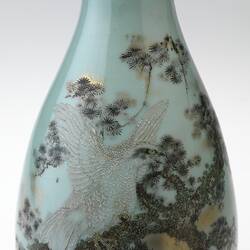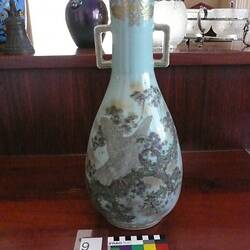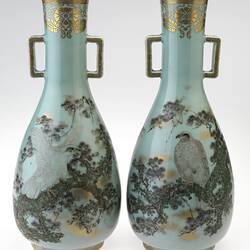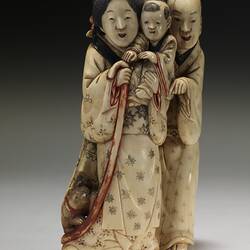Summary
Vase manufactured by Tokyo Hyouchi-en in Fukagawa, Japan, during the early Meiji period between 1873 and 1880. Hyouchi-en was awarded a Fifth prize by the Glass and Pottery jury at the Melbourne International Exhibition. The manufacturers would have received a certificate.
In 1872 the Japanese government established a porcelain factory in Asakusa, Tokyo, specifically to produce material for display at the 1873 Vienna International Exhibition. It was headed by Kawahara Noritatsu (1845-1914). The government sold the factory to Kawahara in 1873 and he subsequently renamed the company Tokyo Hyouchi-en.
In 1900 Kawahara established a factory in Kyoto, known as Kyoto Hyouchi-en. It followed the tradition established at Tokyo Hyouchi-en, decorating porcelain kilned in Seto by the trading company Morimura Group. Kyoto Hyouchi-en was subsumed by the Japanese Pottery Partnership, Nagoya, in 1909. This partnership became known as Noritake, one of the leading companies of Japanese ceramics.
Physical Description
Two handled, tapering cylindrical with slightly bulbous body. Celadon glaze background with gilding around neck and foot. Painted on both sides in muted greys, blacks and browns: one side depicts a mountain landscape, complete with people walking up a path, and the other side an eagle in flight.
More Information
-
Collection Names
-
Collecting Areas
-
Acquisition Information
Cultural Gifts Donation from Dr Will Twycross, 23 Jan 2009
-
Acknowledgement
Donated through the Australian Government's Cultural Gifts Program
-
Manufacturer
-
Place & Date Exhibited
Royal Exhibition Building (REB), Nicholson Street, Carlton, Greater Melbourne, Victoria, Australia, 1880-1881
-
Collector
Mr John Twycross, Elsternwick, Greater Melbourne, Victoria, Australia, 1881
-
Inscriptions
Signed on foot in red paint with three columns of kanji. Signature reads: Tokyo Hyouchi-en Sei, Japan No. 187
-
Classification
Royal exhibition building, International exhibitions, Exhibition heritage
-
Category
-
Discipline
-
Type of item
-
Overall Dimensions
180 mm (Width), 420 mm (Height)
-
Dimensions
415 mm (Height)
Measurement From Conservation. Circumfernece of base: 395 Circumference of rim: 258
-
Keywords
Ceramics, Decorative Arts, Exhibitions: Melbourne International, 1880-1881, Japanese Art, Royal Exhibition Building
